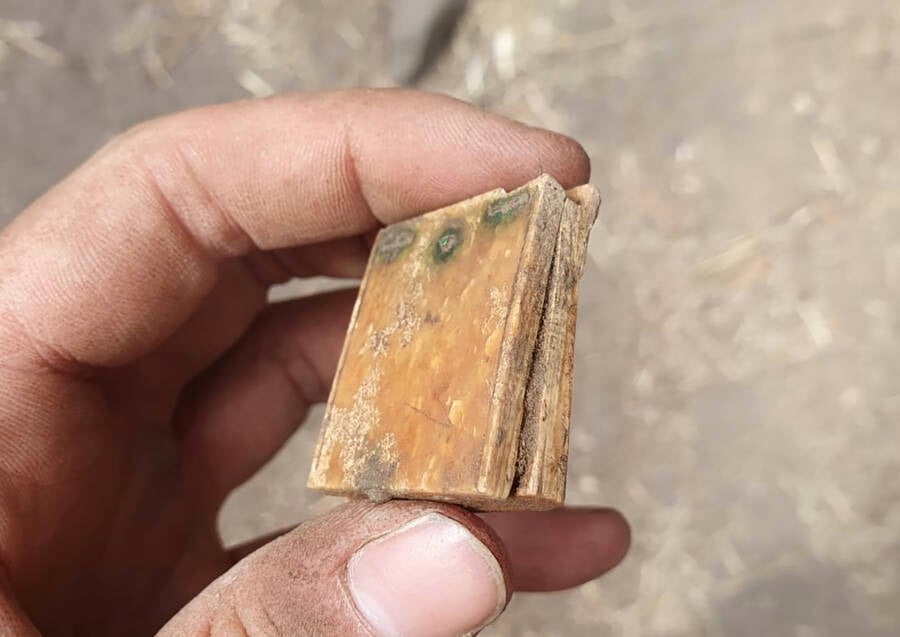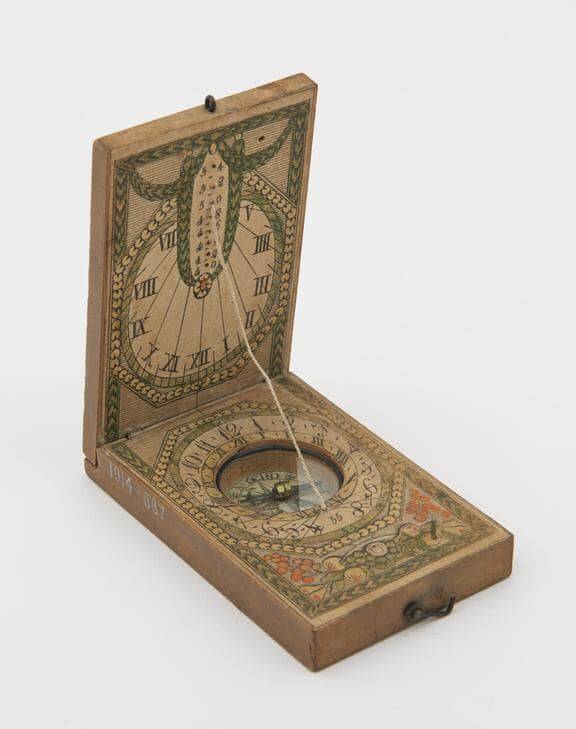The medieval sundial dates from the 16th century and is the first of its kind to be found in the German state of Hesse.

Felix TeichnerThis small sundial is only about the size of a matchbook.
While excavating the site of a church in Marburg, Germany, students at the University of Marburg made an exciting find: a medieval sundial small enough to hold in the palm of your hand.
“The sensational find provides a clear insight into the meeting of a high level of knowledge in astronomy and mathematics with specialized craftsmanship on the threshold from the Middle Ages to modern times,” the head of the excavation, Dr. Felix Teichner, raved about the discovery in a translated statement from the University of Marburg.
The sundial, which is made of bronze and wood, likely dates from the 16th century. It’s the size of a matchbook, which means that someone could have kept it in their pocket. There’s a hole inside that would have fit a stick, which would have once shown the sun’s shadow.

Newsweek reports that it’s the first time that such a sundial was found in the German state of Hesse, and that it likely belonged to a member of the Brethren of the Common Life, a religious community that resided in a monastery on church grounds starting in 1527. Teichner also noted, in an interview with German outlet Hessens Chau, that the find is a rare one, as there aren’t many of these medieval wooden sundials left.

Science Museum GroupAn example of a wooden German pocket sundial from circa 1776 – 1800.
As The Science Times explains, sundials have been made since at least 1500 B.C.E., when they were first developed in China, Babylon, and Egypt. Before long, sundials abounded in both public and private spaces, and people in Europe were carrying pocket sundials by the 17th century.
These sundials had a very simple design. By using a flat plate and a gnomon, which casts a shadow on the plate, people could determine how high or low the sun was in the sky, which informed them of the time of day.
Thus, it’s easy to imagine how the sundial found in Marburg may have been used during medieval times. Tucked in someone’s pocket, it would have been withdrawn on occasion to check the shadow cast by the gnomon and used to verify the time of day.
Still, some questions about the medieval sundial remain.
For starters, Teichner and his students aren’t entirely sure why the sundial was found where they found it. As he explained to Hessens Chau, their excavations have lately focused on an area of the church which people once used as a place to discard waste. The sundial isn’t the only thing they’ve found there, and the other items will require further examination.

PhilippN/Wikimedia CommonsThe town of Marburg, Germany, where the 16th-century wooden sundial was found during excavations at a church.
“We’re digging here at the monastery’s probable rubbish dump,” he said, “and are pulling up much that we need to examine first to identify.”
Though there’s still more to learn about the sundial, it’s certainly an evocative discovery. Just like people today flick their wrist to check their watch, or pull up their phone to check the time, someone hundreds of years ago reached into their pocket to check their sundial.
Positioning it against the sun, they would have studied the shadow, determined the time, and continued on their day.
After reading about the handheld medieval sundial discovered in Germany, see how archaeologists in Germany came across a 1,400-year-old headless horse, alongside its rider, amid a gravesite in Knittlingen. Or, discover the story of the 10,500-year-old human remains that were unearthed from the Duvensee bog in Germany’s Schleswig-Holstein region.





